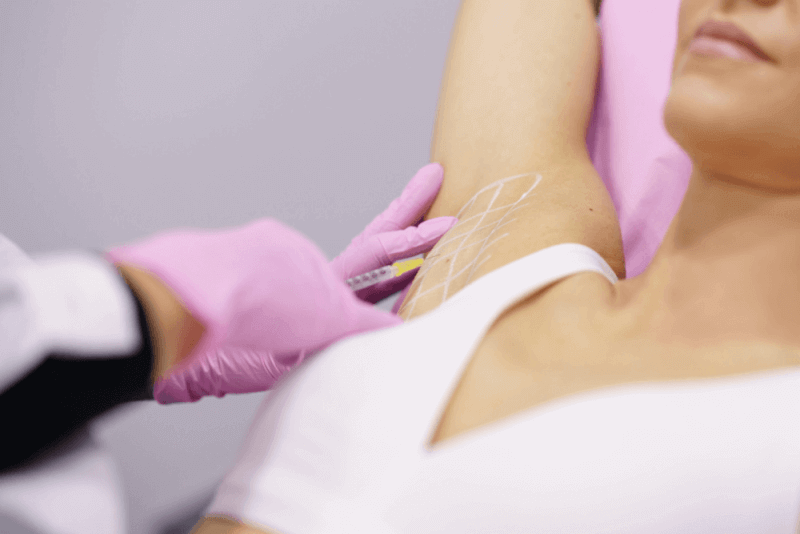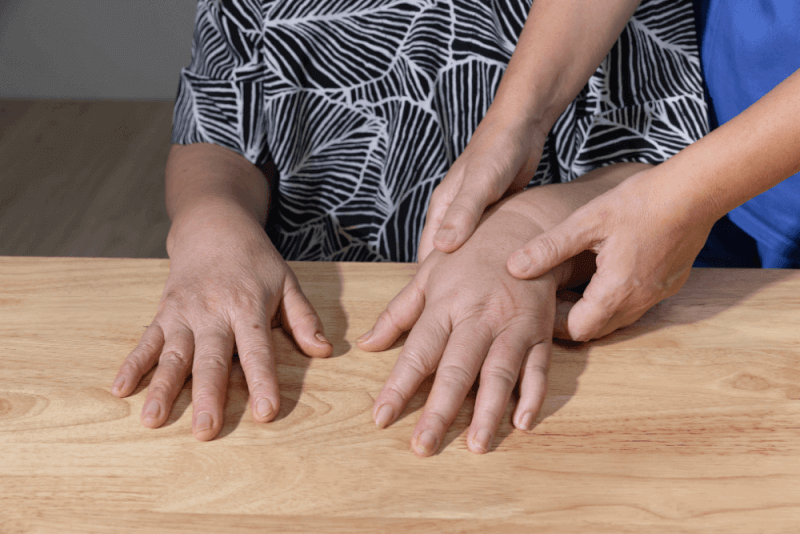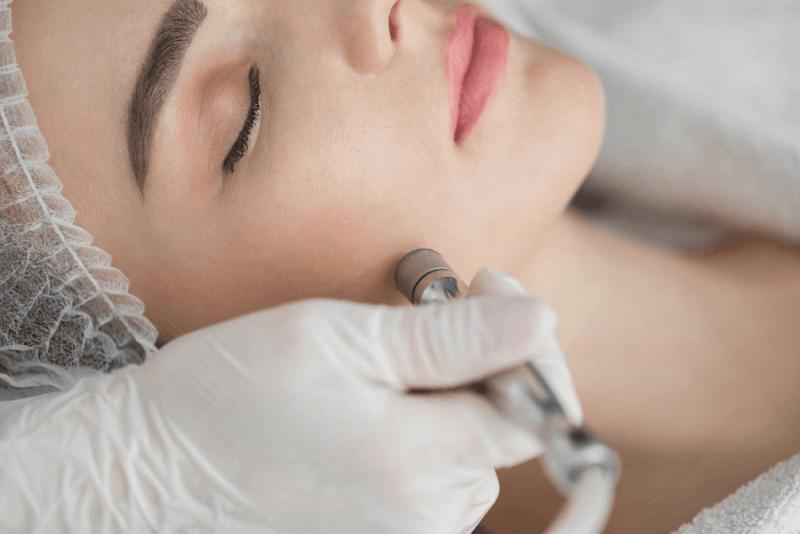What is Sweat Botox?
Hyperhidrosis is the term used for excessive sweating that can negatively impact a person’s quality of life. One of the treatment methods for this condition, caused by overactive sweat glands, is Botox. Although referred to as sweat Botox, this procedure does not completely cure excessive sweating, but it helps eliminate symptoms during the period of its effect.
The Botox toxin is applied to the sweat glands, blocking their activity temporarily and thus reducing the problem of sweating. This is achieved by blocking nerve transmission to the glands.
The effects of the procedure begin to be noticeable a few days after application. The results typically last between 6 to 12 months. The number of sessions required depends on the size of the treatment area and the level of sweating.
How is Sweat Botox Applied?
Before the sweat Botox procedure, an iodine-starch test is applied to the affected area. Then, Botox toxin is injected into the application area in doses ranging between 100 and 150 units. When Botox is applied to certain areas, patients do not feel any discomfort, but areas like the palms and soles may experience some pain. Anesthetic creams are used to prevent this discomfort.
Who is a Suitable Candidate for Sweat Botox?
People who experience excessive sweating in areas such as the hands, feet, groin, armpits, or face, and whose daily and social life is affected by this condition, are suitable candidates for sweat Botox. Additionally, if methods like deodorants that help prevent sweating are ineffective and sweating is bothersome, sweat Botox can be considered.
Which Areas Can Be Treated with Sweat Botox?
This procedure, aimed at eliminating excessive sweating, can be applied to specific areas of the body due to its targeted nature. The areas where sweat Botox can be applied include:
Hand Botox
Botox toxin is also used in the treatment of palmar hyperhidrosis, which refers to excessive sweating of the hands. By blocking the nerve endings that supply the sweat glands, Botox can prevent the glands from functioning, thereby improving the quality of life for those who suffer from excessive sweating in their palms.
As a minimally invasive procedure, it must be performed under local anesthesia. The benefits of the procedure last for several months, and if the effects diminish, Botox can be reapplied to alleviate symptoms.
Foot Botox
Botox is also used to address the complaints caused by plantar hyperhidrosis, or excessive foot sweating. In addition to causing discomfort, foot sweating can lead to health issues such as fungal infections and unpleasant odors. Therefore, applying Botox toxin to the sweat glands in the foot area not only eliminates sweating but also helps maintain foot health.
Armpit Botox
Botox is one of the primary methods used to treat axillary hyperhidrosis, or excessive sweating of the armpits. Armpit sweating can affect daily life and lower self-confidence. By applying Botox toxin to the sweat glands in the armpit area, the glands can be blocked, effectively reducing sweating.
The effects of armpit Botox last for several months, and repeat sessions may be needed to continuously alleviate excessive sweating.
What to Consider After Sweat Botox?
After sweat Botox, the following points should be considered:
- Especially for first-time patients, it is important to avoid heavy lifting or intense exercise during the first week after the procedure.
- The treated area should not be exposed to water for at least 6 hours.
- Ensure the treated area remains dry and clean.
- Avoid applying strong pressure or massaging the Botox-treated area, as this can shorten the duration of the treatment’s effects.
- Protect the treated area from sunlight for 3 days after the procedure.








